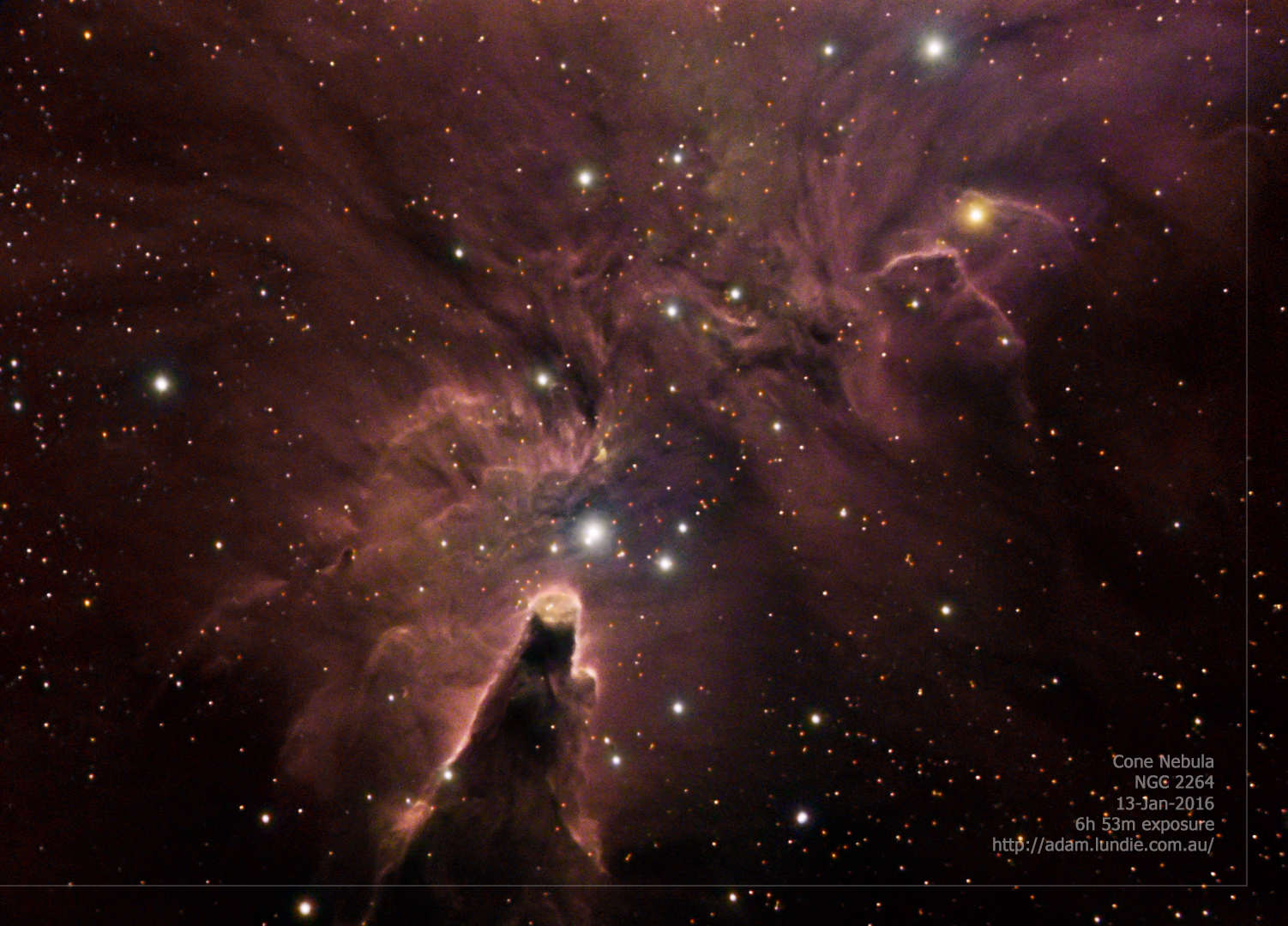Cone Nebula NGC2264
13-Jan-2016

The cone's shape comes from a dark absorption nebula consisting of cold molecular hydrogen and dust in front of a faint emission nebula containing hydrogen ionized by the brightest star of NGC 2264. The faint nebula is approximately seven light-years long and is 2,700 light-years away from Earth.
Image:
- 24x 300s luminance bin2x2 + 20x flat + 50x dark + 120x bias
- 20x 600s Hα bin2x2 + 10x flat + 50x dark + 120x bias
- 10x 200s red bin3x3 + 30x flat + 50x dark + 120x bias
- 8x 200s green bin3x3 + 30x flat + 50x dark + 120x bias
- 10x 200s blue bin3x3 + 30x flat + 50x dark + 120x bias
Total exposure time: 6 hours 53 minutes.
Hardware:
- Celestron EdgeHD 1100 with CGEM DX mount
- Celestron 0.7x EdgeHD focal reducer
- QSI 683-wsg Camera @ -15°C
- Astronomik Type 2c LRGB filters
- Astronomik Hα 6nm filter
- Orion StarShoot Autoguider
- Starlight Xpress Adaptive Optics
Location:
- Orange zone in Brisbane, Australia. (Bortle 7)
- Imaging over 7 nights - average to above average seeing + new moon.
Software:
- Captured with AstroArt 6
- Guiding with PHD2 + PHD_Dither
- Aladin 8.0: Planning & camera alignment.
- CCDInspector: Image analysis & rejection
- CCDStack 2+: Calibrate, align, normalize, stack, curves, deconvolve luminance, combine RGB.
- Photoshop CC: Reduce noise, integrate L+Ha+RGB, high pass filter, unsharp mask, shrink stars, color balance.
